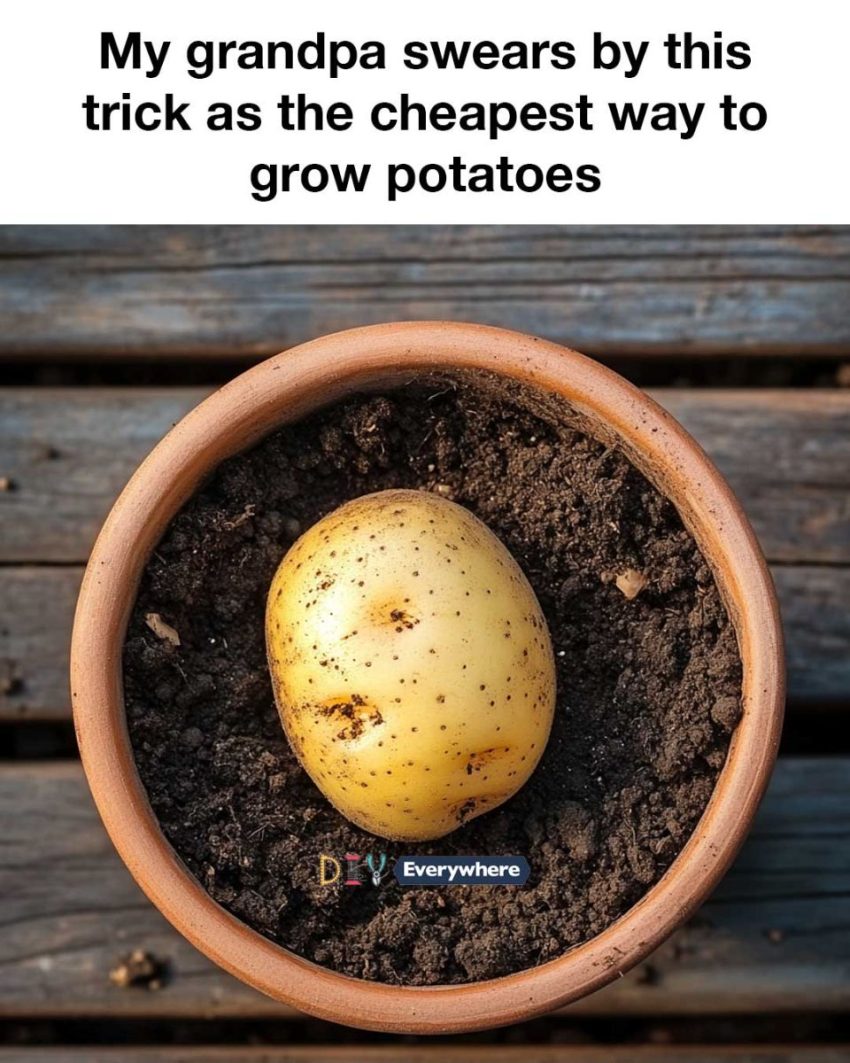ADVERTISEMENT
Materials Needed for Bucket Potato Growing
To start growing potatoes in a bucket, you’ll need a few basic materials: a large bucket (at least 5 gallons), quality potting soil, seed potatoes, and a trowel. It’s also helpful to have a drill for making drainage holes and a watering can for maintaining moisture levels. Optional materials include organic fertilizer and mulch to enhance soil fertility and retain moisture.
Preparing Your Bucket for Planting
Begin by selecting a bucket with a capacity of at least 5 gallons to provide ample space for root development. Drill several holes in the bottom for drainage to prevent waterlogging, which can lead to root rot. If using a recycled bucket, ensure it is clean and free from any harmful residues. Place a layer of gravel or small stones at the bottom to further improve drainage.
Selecting the Right Potato Varieties
Choose potato varieties that are well-suited for container growing, such as ‘Yukon Gold’, ‘Red Pontiac’, or ‘Fingerling’. These varieties tend to have a compact growth habit and produce well in confined spaces. Consider your climate and growing conditions when selecting seed potatoes, as some varieties may perform better in certain environments.
Step-by-Step Guide to Growing Potatoes in a Bucket
This guide will walk you through the process of growing potatoes in a bucket, from selecting the right materials to harvesting your crop. Follow these steps to ensure a successful and abundant potato harvest.
1. Choosing the Right Bucket
Select a sturdy bucket with a capacity of at least 5 gallons. Ensure it is made of food-safe material if you plan to consume the potatoes. The bucket should be deep enough to accommodate the growth of potato tubers and allow for hilling as the plants grow.
2. Preparing the Soil Mixture
Use a high-quality potting mix that is light and well-draining. You can enhance the soil by mixing in compost or well-rotted manure to provide additional nutrients. Avoid using garden soil, as it may compact in the bucket and hinder root growth.
3. Planting the Seed Potatoes
Cut larger seed potatoes into pieces, ensuring each piece has at least one ‘eye’. Allow the cut pieces to dry for a day to prevent rotting. Fill the bucket with about 4 inches of soil, place the seed potatoes on top, and cover them with another 2-3 inches of soil.
4. Watering and Caring for Your Potato Plants
Keep the soil consistently moist but not waterlogged. Water the plants regularly, especially during dry spells, to ensure even moisture distribution. Be cautious not to overwater, as this can lead to root rot.
5. Managing Sunlight and Temperature
Place the bucket in a location that receives at least 6-8 hours of sunlight per day. Potatoes thrive in temperatures between 60-70°F (15-21°C). If temperatures rise too high, consider moving the bucket to a shaded area or providing some form of shade.
6. Hilling and Maintaining the Soil Level
As the potato plants grow, gradually add more soil to cover the stems, leaving the top few inches of the plant exposed. This process, known as hilling, encourages the development of more tubers and prevents them from being exposed to sunlight, which can cause greening.
7. Monitoring for Pests and Diseases
Regularly inspect your plants for signs of pests such as aphids or potato beetles. Use organic pest control methods like neem oil or insecticidal soap if necessary. Keep an eye out for diseases like blight and remove any affected foliage promptly.
8. Harvesting Your Potatoes
Potatoes are ready to harvest when the foliage begins to yellow and die back. Carefully tip the bucket over and sift through the soil to collect the tubers. Allow them to dry for a few hours before storing them in a cool, dark place.
Tips and Tricks for Maximizing Your Potato Yield
To maximize your yield, ensure your plants receive adequate nutrients by applying a balanced fertilizer every few weeks. Rotate the bucket occasionally to ensure even sunlight exposure. Consider planting early and late-season varieties to extend your harvest period.
Common Mistakes to Avoid When Growing Potatoes in Buckets
Avoid using buckets without drainage holes, as this can lead to waterlogged soil and root rot. Do not overcrowd the bucket with too many seed potatoes, as this can limit tuber development. Ensure consistent watering, as fluctuations can stress the plants and reduce yield.
Conclusion: Enjoying Your Homegrown Potatoes
Growing potatoes in a bucket is a rewarding and cost-effective way to enjoy fresh, homegrown produce. With a little care and attention, you can achieve a bountiful harvest that will delight your taste buds and provide a sense of accomplishment. Enjoy the fruits of your labor by incorporating your homegrown potatoes into a variety of delicious dishes.


